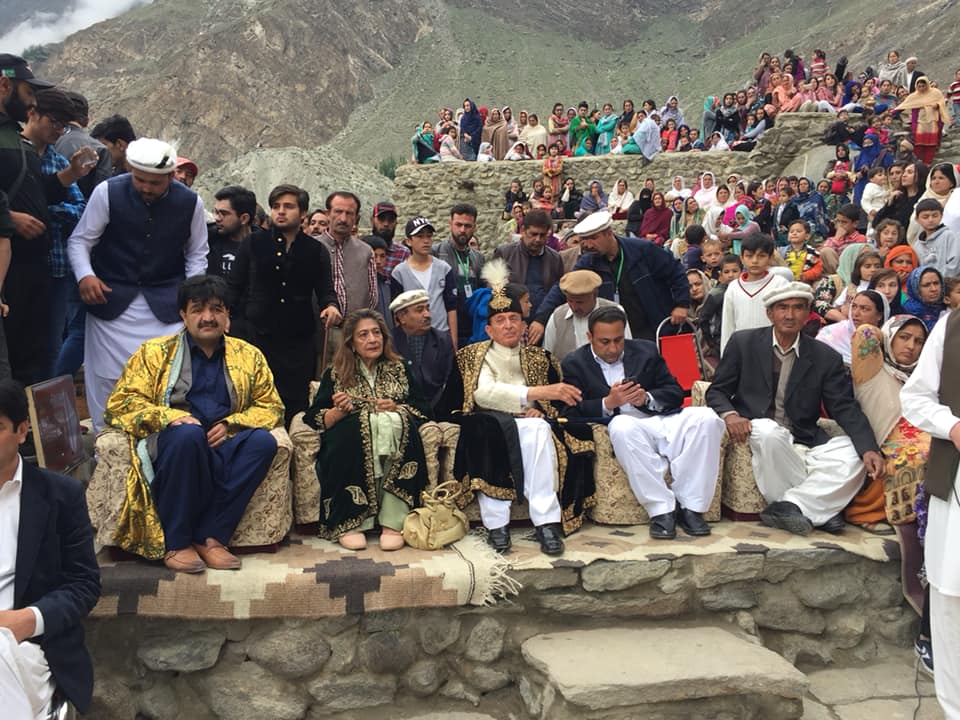Situated in the northern areas of Pakistan; the valley Hunza has been one of the
distant and mysterious places for centuries, due to its remote location and
being cut off from the rest of the world. the valley of Hunza created a world of
its own with a unique and different lifestyle. Although it has adopted a lot of
traditions from other places in the later years but there are still a lot of
traditions that are purely are a part of the Hunza’s culture. One of the most
ancient traditional festivals that are still in practice is the festival of Ginnani.
The festival Ginnani is a festival that was celebrated by the people of Hunza on
the occasion of the new harvest. The whole point of this celebration was to show
gratitude to the universe for the about-to-start harvest season. The
festival of Ginnani was celebrated around 20 to 25th of June, especially on 21st
June the longest day of the year, when the wheat grains were about to ripe.
Due to the remote location and the harsh weather of Hunza, farming was the
main source of living and it was never easy; the harsh weather made it very
hard for the farmers and famine were regular. The people of Hunza used to
celebrate this festival so that their crops could survive the harsh weather and
they could have enough food.
Ginnani celebrations would start around ten days before the actual day. The
local musicians would play musicals which are called as Hareep in local
language Burushaski for straight ten days and till the day of Ginnani in the
arena called chataq in front of the palace. On those days the local shaman
called the bittan would perform and predict the events in the future and would
pray for the betterment of the valley.
On the day of Ginnanithings would start early in the morning when everyone
would wake up early and would go their fields with a hunzain dish called
burumhanik which would consist of roti like pancakes and the organic butter
and flour this combo is used on good occasions and its considered to bring luck
and prosperity. The burumhanik is considered to be a dish of tradition and it’s
used on every good occasion either it be marriage or any other good ceremony.
They would go with the burumhanik and some flour. The elders of the family
would lead and once reached the fields they would stop at the entrance and
would go to the irrigation stream and they would spread some butter on the
channelfrom where their fields gets water and sprinkle some flour on it, to
bring good luck and prosperity in the future. Then the elders would go to the
field, of wheat and they would also spread some butter on the unripe grains;
after that they would pluck up a bunch of wheat plantsfrom the fields and then
carry it back to the home, now they would place those on fire and cook the
grains and later would make a dish where they would put those grains into
dairy products. And this was an integral and important part of Ginnani festival
so this was considered as a tradition of gratefulness and since the dairy
products were considered pure which would bring luck and prosperity to their
lives. And every one starting from the elders of the family they would drink a
spoonful of this potion. They would pray to the God for the betterment of the
future.
After that there would be lunch time where the whole family would gather and
would have lunch together. They would have great meals on this day and would
enjoy their lives. They would usually make diramphitti (it’s a hunzain dessert
made from sweet flour and apricot seeds oil) and burusberikux (a local dish of
Hunza made from cheese spread on the khamali; a type of thin roti spread with
butter on it) (the cheese was brought back from the grasslands or the grazing
grounds by the cowboys as a special gift) and later on they would go to the
royal palace or the polo ground where they would have a musical function.
The above one was the way how the commoners would have celebrated the
Ginnanifestival, as for royals the ceremony was almost the same but with a
difference of musical tunes and stuff like that. The royals would go to their
special fields which were called bull maln (the royal fields). There was special
music for them while going to the fields and coming back. The royals would do
the same procedures and would go back to the palace and would share it with
everyone gathered in the arena called chataq. Then there would be lunch and
after that everyone would gather around in the polo ground where they dance
and enjoy this all, the people would dance. The Mir would be the first one to
dance followed by different tribes and after that, the dinner was served by
the royal family. Which would be sharbat (again a local dish made from wheat
and butter) after that everyone would go back to their homes and that’s
how this day would end.
These festivals are slowly dismissed when the royal family dissolved in the year
1974 when Zulfiqar Ali Buttho ended this all these festivals slowly started to
vanish and these festivals were slowly abandoned. But still, we all celebrate this
festival to this day with some amendments.


0 Comment